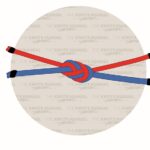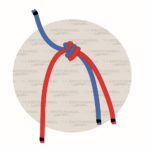A Zeppelin bend is a secure type of knot that joins two ropes together. They are easy to untie but are challenging to tie when under pressure from a load. The Zeppelin bend is almost identical to the Ashely, alpine butterfly, and hunter’s bend.
The Zeppelin bend was named after an incredibly light airship. The airship’s captain claimed to use the Zeppelin bend on his airships. Yet, evidence suggests otherwise. Zeppelin knots are not well-known and do not appear in The Ashely Book of Knots. They do appear in The Complete Book of Decorative Knots.
Zeppelin bends are used by arborists, climbers, boaters, and outdoor survivalists.
You can tie a Zeppelin knot in two different ways: with the working ends alone or by forming bights (loops). Follow the directions included below to learn how to tie a Zeppelin knot.
Other knots similar to the Zeppelin knot include:
- Carrick bend
- Double fishermen’s bend
- Double Zeppelin bend
What Is A Zeppelin Bend Knot?
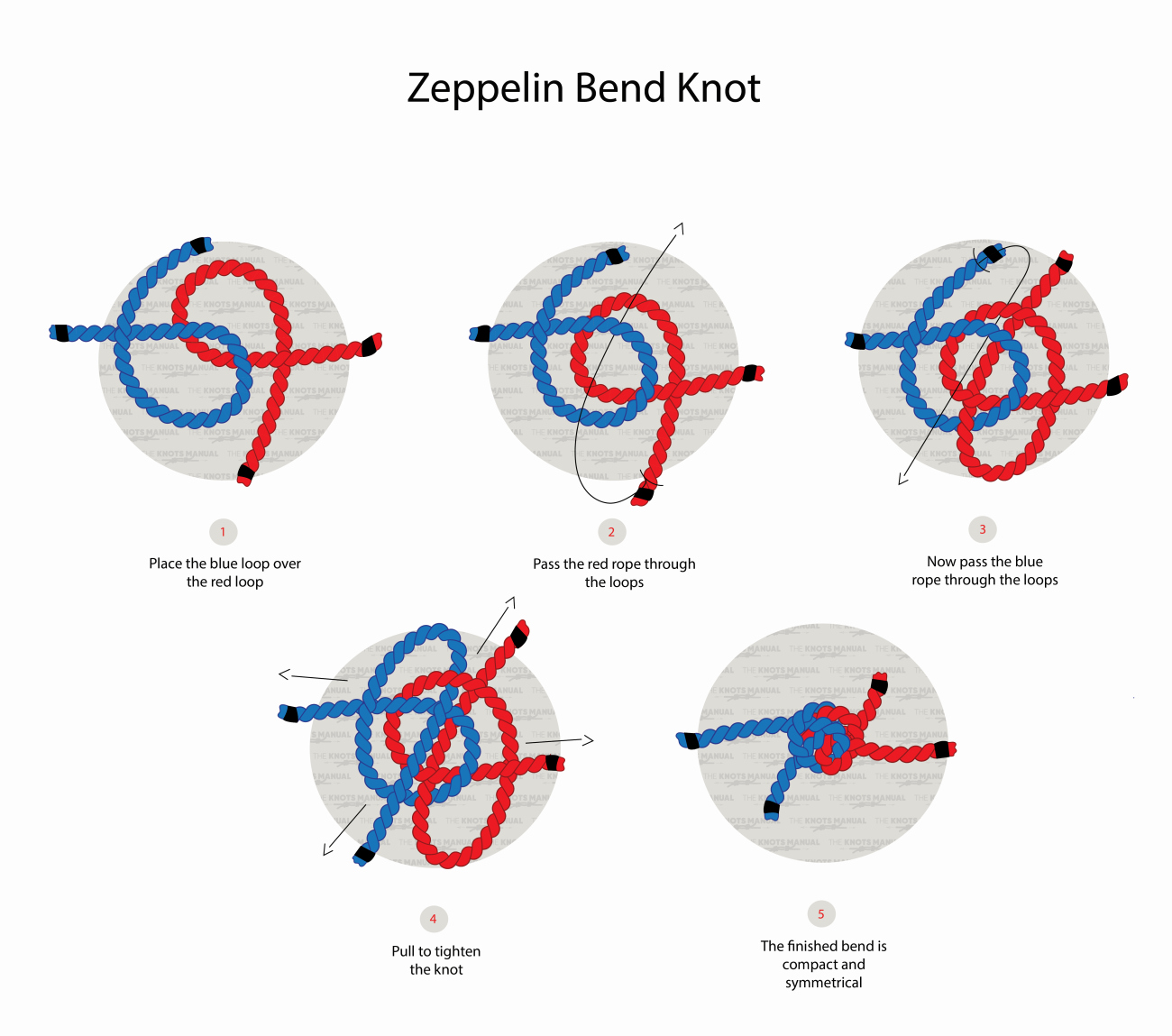
The Zeppelin knot is a joining knot. You create it by interlinking two symmetric overhand knots. It is an end-to-end knot, also known as the “Rosendahl bend.” A bend is any knot used to tie two ropes together.
These knots are ideal because they are secure, stable, and resistant to jamming. They also resist the effects caused by cyclic loading and slack shaking.
To create the Zeppelin bend, you’ll use two superposed loops with opposite chirality. Chirality pertains to the “handedness” of the rope, or how the rope wants to twist when you form a loop. Ropes either spiral to the right (Z) or the left (S). You can not change the chirality of a rope, no matter how much you try to force it. So, you must create a Zeppelin knot with a rope with right (Z) and left (S) chirality.
Tying the Zeppelin bend is difficult when there is tension on the rope. The same sentiment is true for all “end-to-end” ropes. Sometimes, it is impossible to create Zeppelin knots when there is too much tension.
Conversely, it’s effortless to untie the Zeppelin bend under a heavy load.
The downside to the Zeppelin bend is that it’s hard to distinguish from other similar bends. Bends that look almost identical to the Zeppelin bend include:
- Rigger’s (Hunter’s) bend
- Butterfly bend
- Ashley’s bend
The History Of The Zeppelin Bend
A “Zeppelin” is an airship with a rigid body. They are airships from the 1920s famed for being “lighter-than-air.” The ships got their name from Count Ferdinand von Zeppelin, one of the early pioneers of the vessels.
As the story goes, these knots were supposedly used on airships. Yet, we don’t have any proof of this. US Navy Officer Charles Rosendahl says he insisted on using these knots on his airships. It is doubtful this actually occurred due to information provided by Giles Camplin.
Giles Camplin was the editor of Airship Heritage Trust’s Journal Dirigible. In the journal’s 60th issue in the summer of 2010, Camplin reported the actual docking procedure. The docking procedure of these airships involved the shackling of two wires.
Later in life, Officer Rosendahl claimed he knew nothing of the Zeppelin knot. That admission makes it even more unlikely that the airships used them. A rigger from the R100 ship also asserted that they always used rolling hitches on their vessels.
Plus, you cannot tie a Zeppelin knot under loads, likely making it useless for airships. Finally, using a Zeppelin bend to moor the airship would have been incredibly awkward.
The First Appearance Of The Zeppelin Knot In Literature
Many knot-tyers claim that the Zeppelin knot is ideal for joining ropes together. Still, only a few know of this knot. The original publication of The Ashley Book Of Knots does not include the Zeppelin knot.
The Ashley Book Of Knots is one of the most all-encompassing books on knots. Yet, oddly, the Zeppelin bend is not included there. Still, the book describes a type of lanyard knot (illustration #582). That knot appears almost identical to the Zeppelin knot, although it doesn’t go by that name.
There is another book, The Complete Book of Decorative Knots by Glove Pequot. He describes the knot from illustration #582 as the “blimp knot.” The knot from illustration #582 is not the Zeppelin bend. Still, it has remarkable similarities. With a few alterations, the knot looks like a double-slipped Zeppelin bend.
Knot tyers discovered they could use the “blimp knot” as an alternative to the butterfly loop. The idea is to isolate a worn section of rope in the center of the knot. The worn part of the rope is held where there is a double-loop-crossing, otherwise known as a “Z folded central.”
How To Tie A Zeppelin Bend Knot
Tying a Zeppelin bend knot is challenging while the rope is under tension. So, you need two loose ends of the rope to begin tying. Then, you will create a simple knot at the end of each rope. You will weave the knots together to create the pattern specific to the Zeppelin bend.
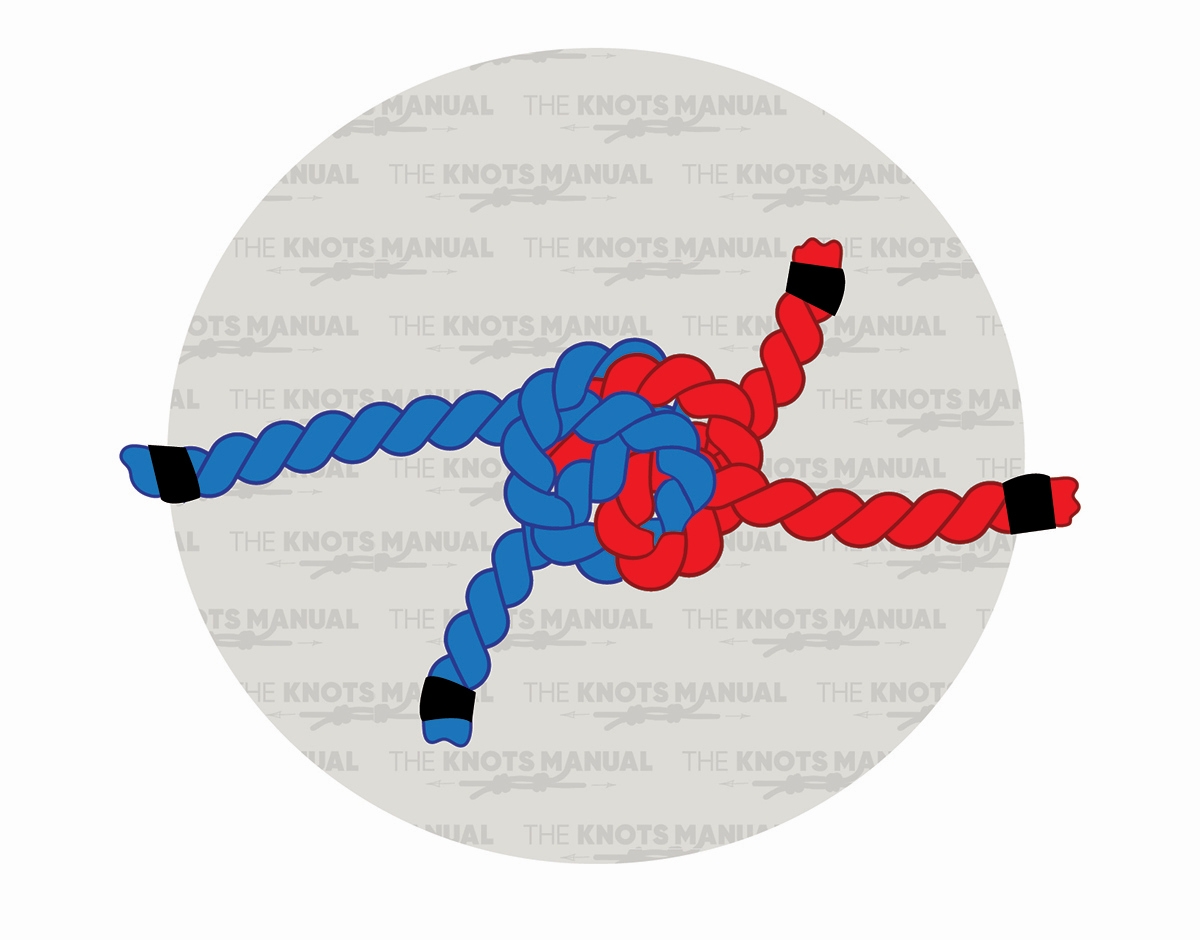
Follow these steps to tie the Zeppelin bend:
Step 1:
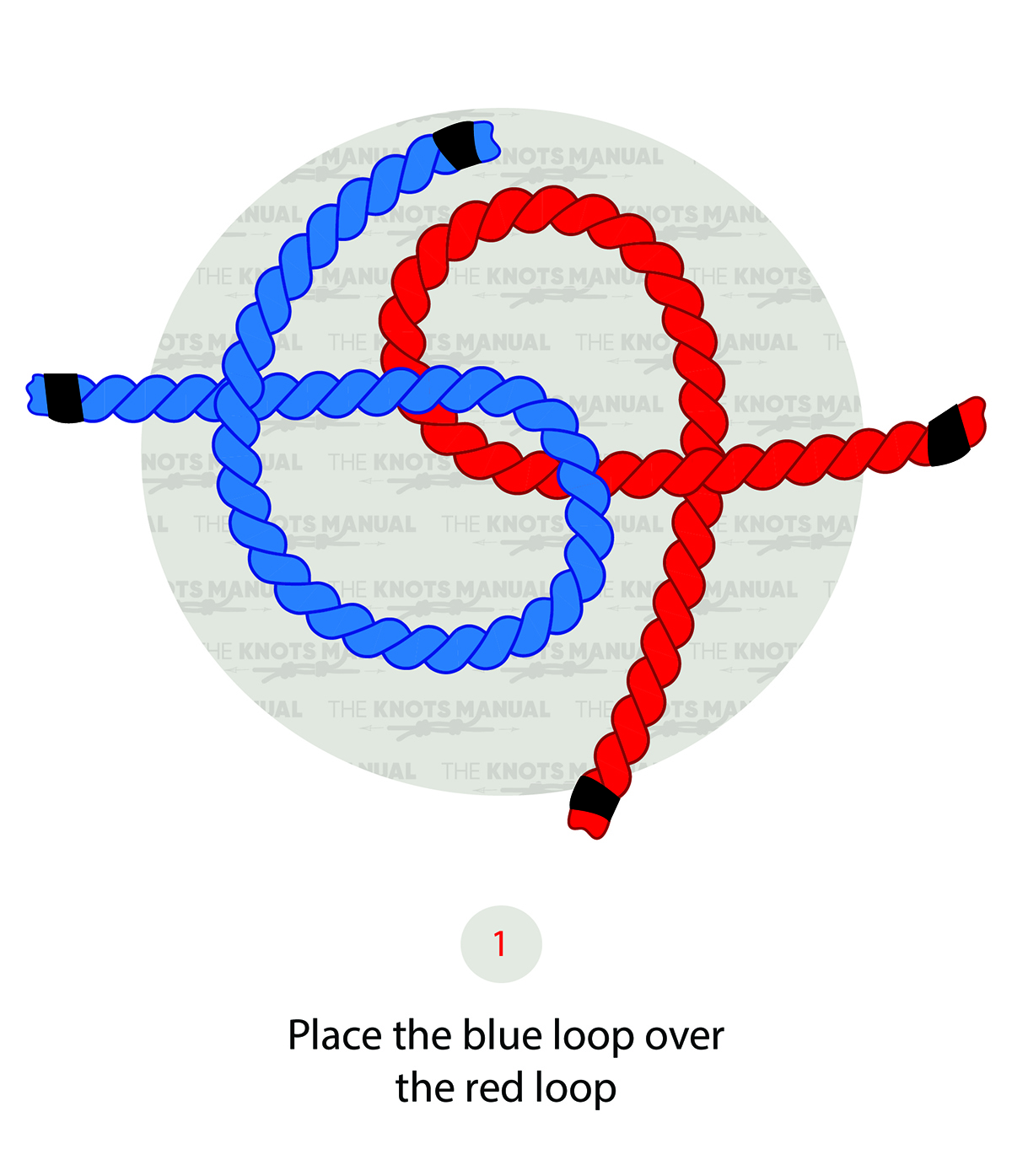
Create a bight (loop) in each rope.
Step 2:
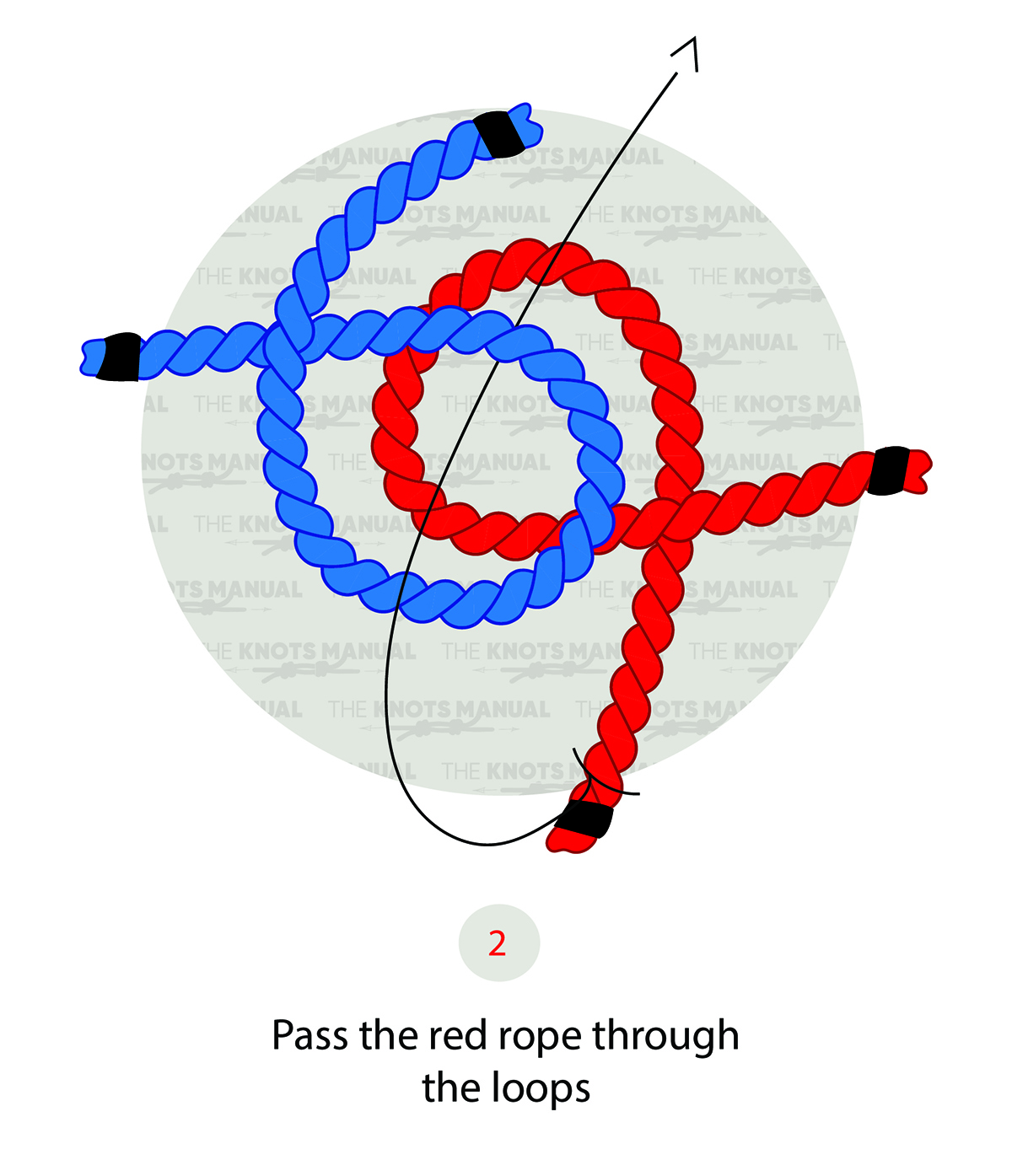
Create a bight (loop) in each rope.
Step 3:
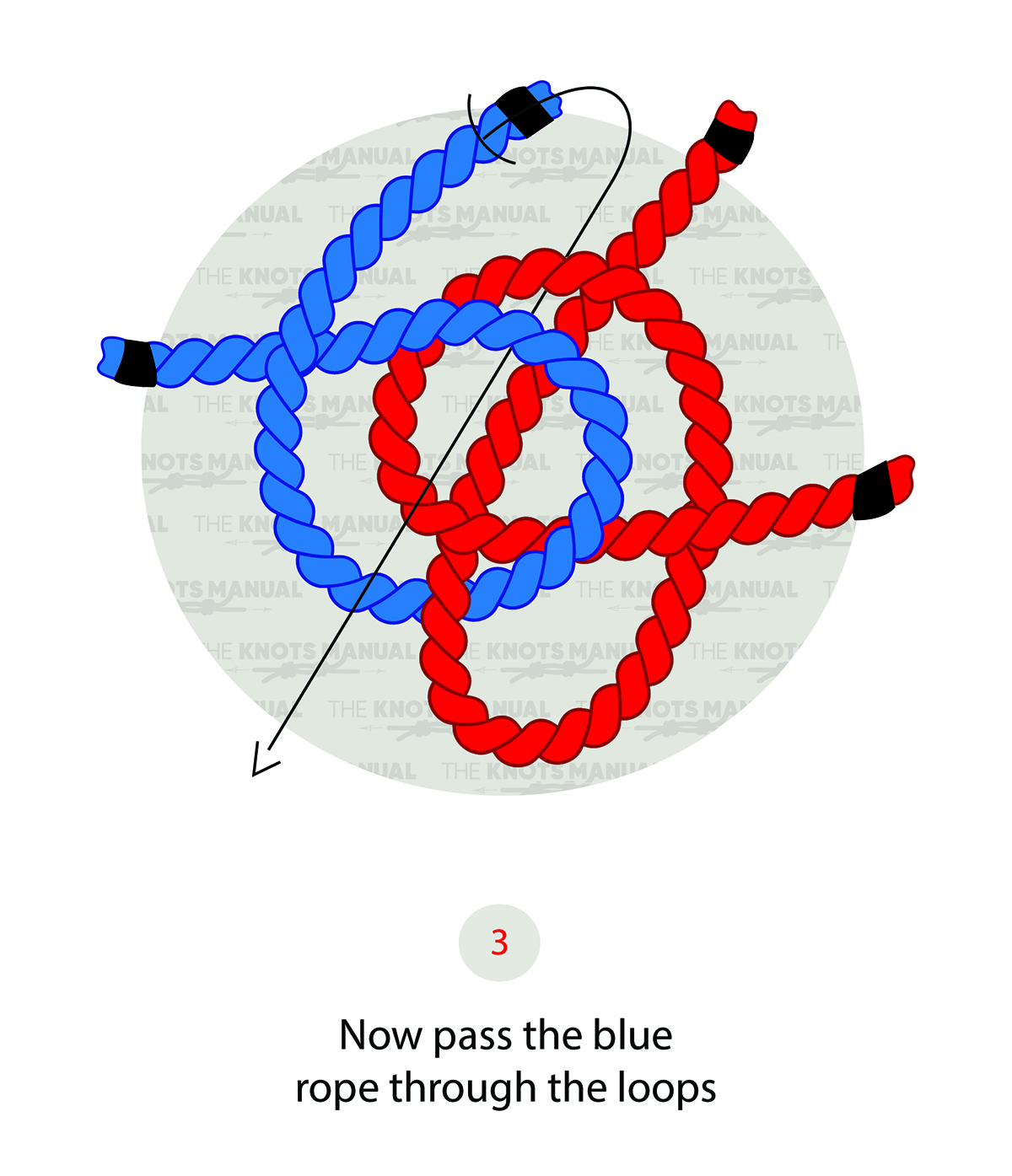
Pass the working end of rope (2) through the loops of both rope (1) and rope (2).
Step 4:
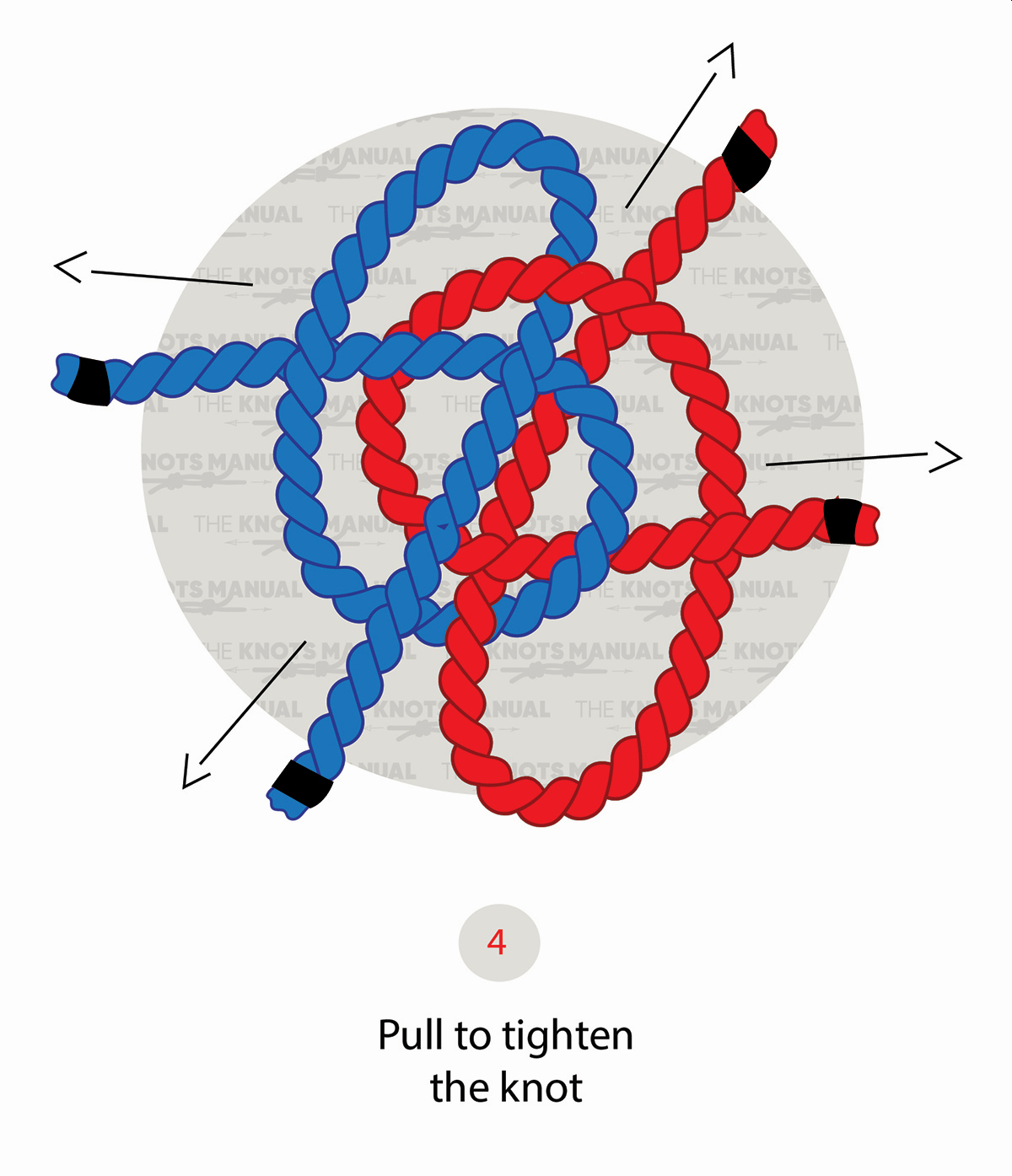
Pass the working end of rope (1) through the loops of both rope (1) and rope (2).
Step 5:
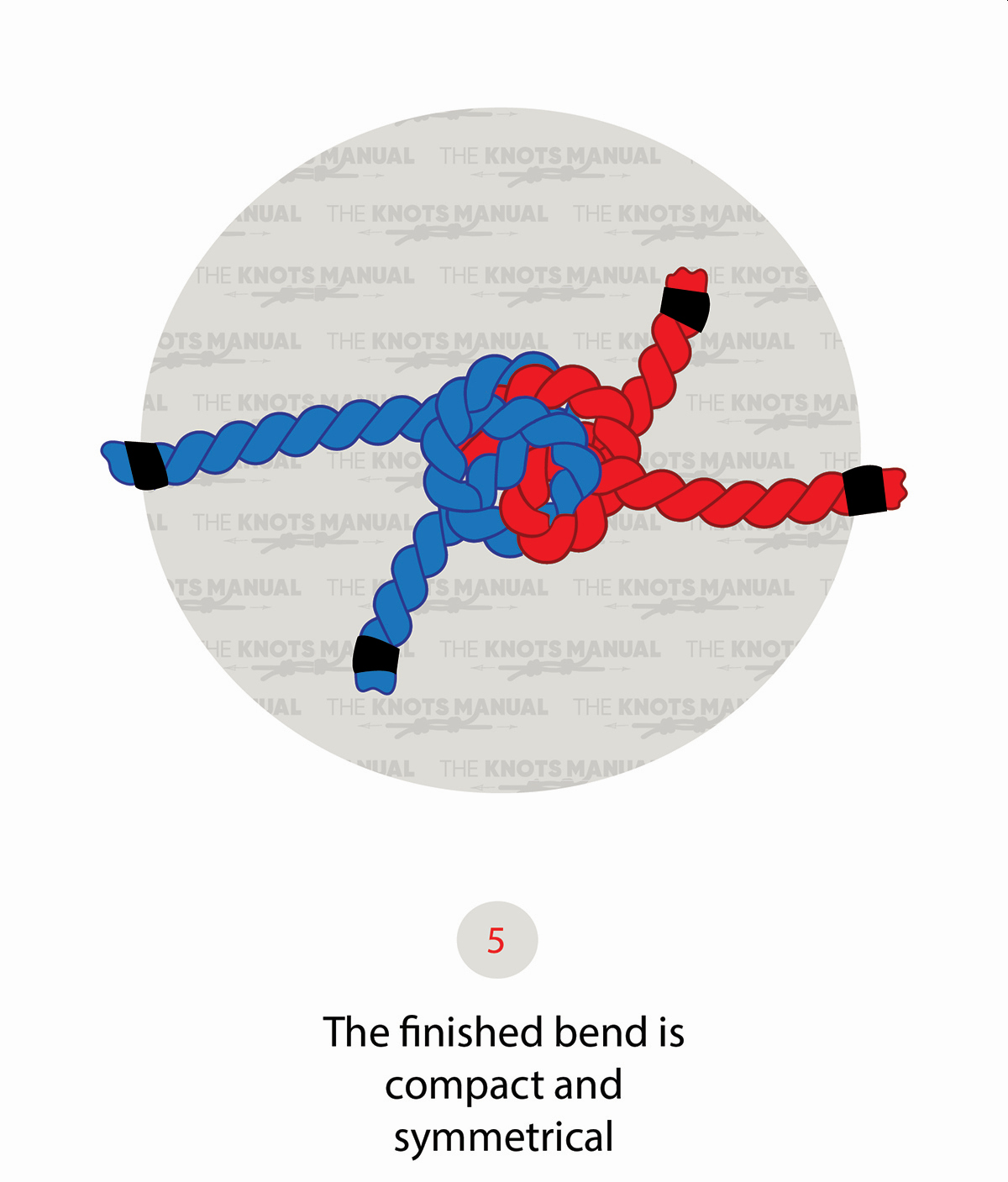
Simultaneously pull on the two working and two standing ends to tighten the knot.
Eye Loop Knots Within The Zeppelin Bend
The Zeppelin bend, and all other bends, have four eye knots. The eye knots of the Zeppelin bend form by linking the rope’s tail to the standing part.
Most eye knots are created by linking two rope tails or two standing parts. Such knots are unable to hold heavier loads. The Zeppelin bend has better utility because the eye loops are not created with the usual method.
The Slipped Zeppelin Bend
You can also create a slipped Zeppelin bend with a few modifications. Rather than using the straight end of the rope, you will make an elbow in the rope’s end. Slipped Zeppelin bends are typically easier to untie than their traditional versions.
Use Bights Instead Of Ends
You can also create the Zeppelin bend by making bights (loops) in the ends of the rope. You will create a bight (loop) at either end of your rope, which leaves you with a third loop.
Forming the Zeppelin knot this way gives the knot less curvature. Less curvature produces a higher breaking strength. Both methods are just as easy to untie. Still, Zeppelin knots with bights are shorter, so they are ideal when you don’t need as much rope. It also allows you to isolate three weak areas in the rope.
Follow these steps to tie the Zeppelin bend with bights:
- Hold both ropes in one hand and fold both working ends backward.
- Pass the working end of rope (1) beneath itself.
- Pass the working end over the standing end of rope (2) and through the loop of rope (1).
- Pass the working end of rope (2) through the loop of both rope (1) and rope (2).
- Simultaneously pull on the two working and two standing ends to tighten the knot.
The Uses Of The Zeppelin Bend
Many people have not heard of the Zeppelin bend, so it doesn’t have as many uses as other knots. Still, besides joining two ropes, the Zeppelin bend is helpful in these industries:
- Rigging for arborists
- Climbing
- Sailing
- Outdoor survival
Knots Similar To The Zeppelin Bend Knot
Rigger’s Bend (Hunter’s Bend): Comprises a knot woven on either end of the rope with a unique pattern. Formed with two interlinking loops with the same chirality. These ropes are prone to jamming.
Alpine Butterfly Bend: Comprises a knot woven on either end of the rope with a unique pattern. They are easy to untie.
Ashley’s Bend: Comprises a knot woven on either end of the rope with a unique pattern. These ropes are prone to jamming.
Carrick Bend: The Carrick’s bend is the best alternative to the Zeppelin bend. It is easy to untie and can hold a significant load.
Double Fisherman’s Bend: The Zeppelin bend is often used in place of the double fisherman’s bend. The Zeppelin bend is less likely to jam. The double fisherman’s bend is created with a double overhand knot in the form of a strangle knot. Each working end passes around the standing end of the opposing line.
Double Zeppelin Bend: These knots are created by first creating a Zeppelin knot. Then, you pull the working ends around and through the middle of the knot to create a second knot. Most experts agree that a second pass is unnecessary because it does not strengthen the knot.
FAQs
How Secure Is The Zeppelin Bend Knot?
Experts agree that the Zeppelin bend knot is very secure. It is unlikely to slip or bind, and it is shake-resistant. The Zeppelin bend stays secure when made with any natural or synthetic rope material. The same cannot be said with many other knots.
